Despite the FEI's ruling that Rollkur is a banned practice, and instead has favored the use of LDR (Low, Deep, Round), there is plenty of evidence to the contrary that hyperflexion is a norm for competitors. The World Equestrian Games, hosted in Kentucky this year is already proving the perfect grounds to spot the practice in person.
A friend posted the link for a photo gallery supported by St. Georg magazine's website which shows many unsightly images. I was unable to find it just perusing through their site, but that mostly just means I gave up looking after I had to translate every page just to navigate it. If someone at St. Georg reads this, let me say that it would be spectacular if your webmaster instituted even a rough method of translation right on the site. Although Google probably loves my regular visits to their translation services…
St. Georg 2010 WEG Photo Gallery
What blows my mind about one image in particular in that gallery is the horse whose face is practically parallel with the ground… and yet there is more.
Meandering about the web and all of the promotional videos I've managed to find one of Isabell Werth riding Warum Nicht in the warm up arena. The introductory horse whinny on the video sounds more like a cry for help than of a “happy” dressage partner. In the video you see Isabell pulling and tugging on the reins as she rides around with her horse in various degrees of hyperflexion, looking the part of anything but harmonious. His gaits are stilted and remind me of western pleasure horses' gaits that have been retarded and made unnatural for the show ring. His canter seems more like an amble than a leaping three beat gait.
Video of Isabell Werth riding Warum Nicht in warm up arena at 2010 WEG in Kentucky
But she is not the only one…
Video of Hiroshi Koretsu riding Whisper in warm up arena at 2010 WEG in Kentucky
And then there is this interesting ride by Anabel Balkenhol aboard Diablino. I say that it is interesting because of all of the Grand Prix competitors I've watched in the last few years, she is one of the few whose horse you can actually see his abdominals contracting to bring the hind legs under more through most of the ride. He doesn't really flex a great deal through the hind limbs but I would say he is closer to collecting than most I've watched. She seems to have to be very loud in the reins as you can see her tugging on them rather hard at times, but he is not often behind the vertical and when he is it is not from the rider's wishes it would seem. For the most part he is up and open and one of the more enjoyable horses to watch.
Video of Anabel Balkenhol warming up on Diablino at the 2010 WEG in Kentucky
Also of note is the rider Adelinde Cornelissen who was set to compete aboard the stallion Parzival. Adelinde is a student of Anky van Grunsven and was disqualified from the competition when her horse was found bleeding from the mouth during her ride. Reports from her crew attribute the blood to Parzival having bit his own tongue. Images from the gallery link above show several examples of Cornelissen riding in hyperflexion and also being coached by Sjef Janssen.
I'm not surprised but I guess hopeful that perhaps all of the bad publicity surrounding Patrik Kittel and the Blue Tongue incident, the lawsuit filed by Anky van Grunsven and so on would make these riders a little less out in the open about using such methods in public competitions. Obviously they care not one lick if the great horse community feels they are abusing their horses for the sake of competition. What are your thoughts? Were you expecting to see this at the World Equestrian Games?
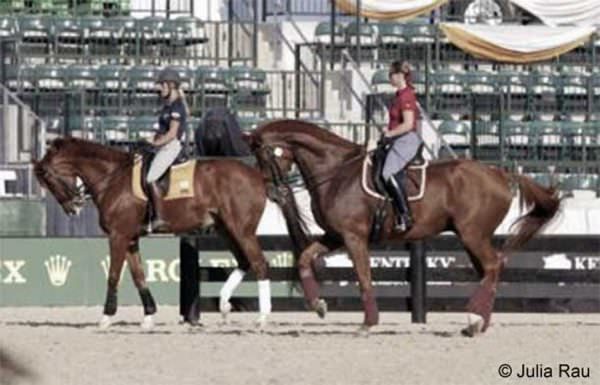
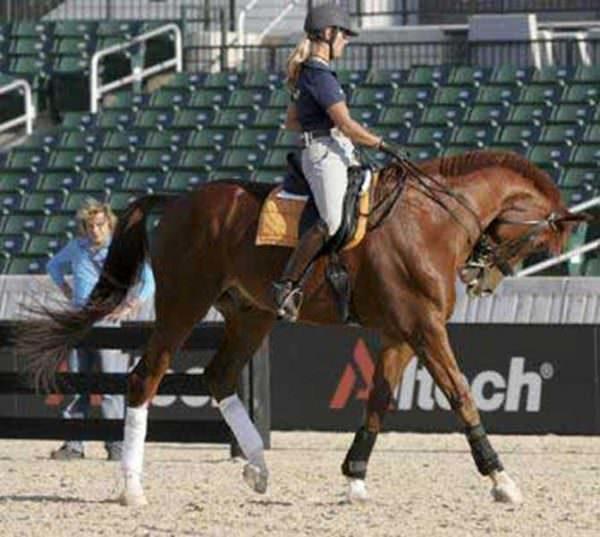


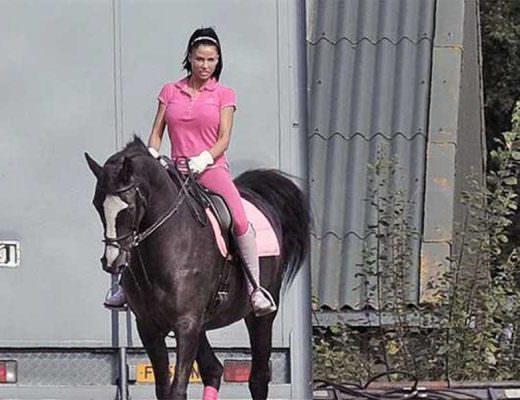
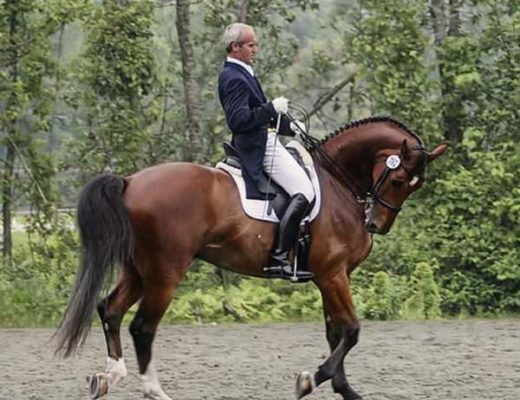

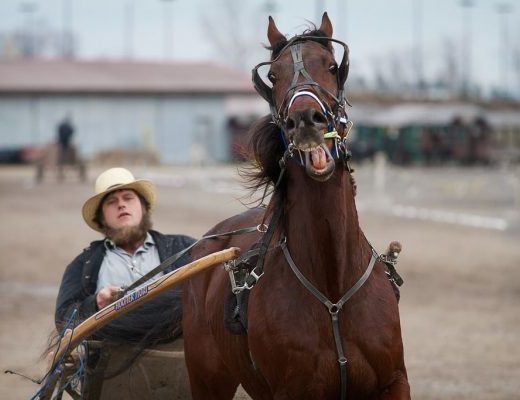

I read with interest you article on Rollkur and its continued presence at WEG 2010. I for one do not condone the use of excessive force when training or riding horses, however this is such a difficult thing to conclusively prove is it not? A single photograph is but a brief instance in time and without knowing what happened immediately before or after, is it right to judge on that single frame? Go to any low-level show and you will see instances of riders heaving their horses head around, with what could be excessive force on the bit would you not agree?
So the question is, do we start introducing sealed strain gauges to the reins? How do we once and for all show the differences between Rollkur, LDR and any other contentious methodology to finally agree on what constitutes excessive force?
Thanks for the post. I am adding the links to my blog and a link to your site as well. I am putting together a mailing list for like minded riders/trainers/competitors who are passionate about keeping the classical principles alive. Check out my posts and if you are interested I would appreciate help promoting it.
http://www.lighthorsefarm.com/LHFBlog/talkin-bout-a-revolution/
Thank you for the link back, I actually signed up for the newsletter to keep abreast of the news regarding “Talkin’ Bout A Revolution” and look forward to how it develops. If there is anything I can do to help or get involved just let me know!
All excellent questions Gary. I would have to say regarding it being just one frame, that there are videos circulating that show it is more than a single frame in which these horses are being ridden behind the bridle. There are also physical changes that begin to happen following the long term use of hyperflexion including the trademark bulge around the 3rd cervical vertebrae.
Even without continued physical force once the posture is trained into the horse it presents damaging effects. Abuse is not limited to the physical realm only and psychological abuse is a reality, particularly in animals which cannot voice their own objections such as the horse.
In all of the forms of hyperflexion – Rollkur or LDR – one common piece exists and that is the horse’s face comes behind the vertical. In the rules of Dressage the accepted position of the head is for the face to be on the vertical, at 45 degrees or anywhere between the two depending on the horse’s individual conformation. Not all horses are physically built to maintain nose on the vertical AND also be able to truly collect their body. To lift from the base of the neck and flex the hind limbs. Perhaps if anything coming behind the vertical were to be judged more harshly riders would have to resort to another method of training that did not incorporate excessive hyperflexion of the neck? What are your thoughts?
And it is unfortunately true that we see riders in every show tugging and pulling on their horse’s face, that one I will chalk primarily up to education. Let’s hope we can all work together to bring change to that. 🙂
You can see many of this happening in show jumping at the WEG. The German rider Marcus Ehning had his horse clearly behind the vertical when he entered the ring. You can really differ from which riders use rollkur and which riders don’t.
I agree Rommina, and greatly overlooked in other disciplines is this habit of riding behind the vertical. I know some people who are more imbued in the jumping circuit were surprised that dressage people were just learning about rollkur and riding in hyperflexion when it is a common practice for many jumpers, and also in certain western disciplines.
I also got your message and will be sending a reply shortly. 🙂
I was at WEG and spent some unhappy time watching the riding in the warm up ring. I certainly didn’t see any ‘happy atheletes’ there. I did see a bunch of lovely horses ridden almost constantly behind the bit, occasionally yanked and or spurred, and acting pretty much resigned to their fate.
It can be rather resignating to watch these horses as well considering that despite protests and public outcry the FEI has done nothing to stop the abuse of these amazing horses.
Cheers Wendy